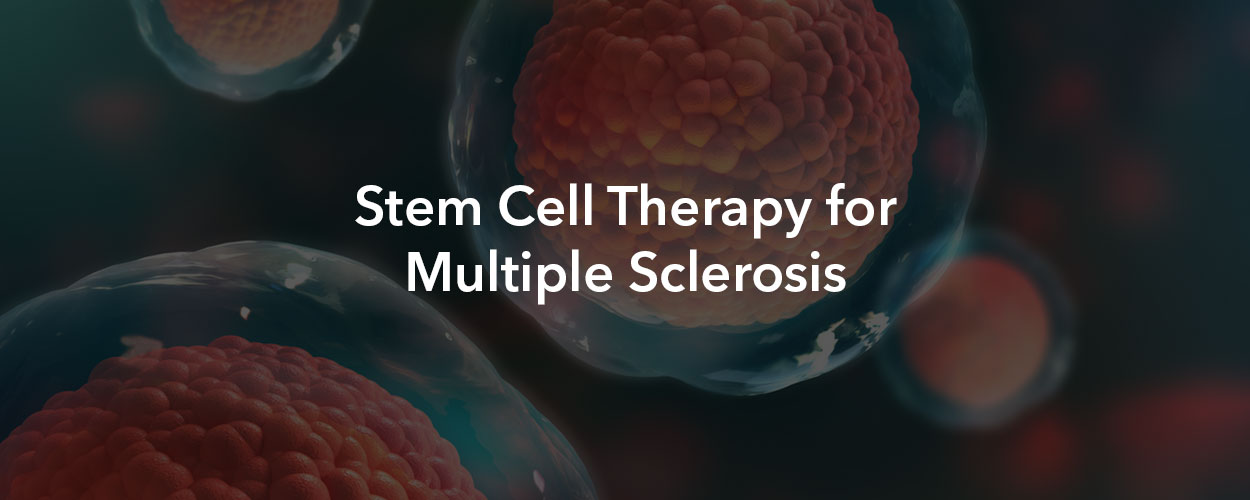The Best Strategy To Use For Regenerative Medicine For Multiple Sclerosis
Wiki Article
About Regenerative Medicine For Multiple Sclerosis
Table of ContentsAbout Regenerative Medicine For Multiple SclerosisFacts About Regenerative Medicine For Multiple Sclerosis UncoveredRegenerative Medicine For Multiple Sclerosis for DummiesThe Definitive Guide to Regenerative Medicine For Multiple SclerosisNot known Details About Regenerative Medicine For Multiple Sclerosis Regenerative Medicine For Multiple Sclerosis - QuestionsAll About Regenerative Medicine For Multiple Sclerosis
The mesenchymal stem cells hair transplanted during stem cell treatment can split and grow to form new cells that can replace the harmed cells of the worried cells. This could recover neurological features in people with this condition. These benefits of stem cell therapy are further supported by the capability of MSCs to promote healing.People with numerous sclerosis are typically treated with mesenchymal stem cells. These are multipotent stem cells that have the capability to separate and develop to create a variety of cell kinds in the body. When hair transplanted, these stem cells can establish to form healthy and balanced afferent neuron therefore supporting the regeneration of the broken tissues of the nerves.
As soon as hair transplanted, the stem cells migrate to areas of inflammation or damages within the main worried system (CNS). They are normally attracted to the sites of injury where the body immune system is striking the myelin sheath, the protective covering of nerve fibers. The stem cells function by promoting the fixing and regeneration of harmed myelin, potentially recovering feature to impacted nerve cells.
Our Regenerative Medicine For Multiple Sclerosis Diaries
Stem Cell Research on MS The National Numerous Sclerosis Culture, along with other organizations, is actively funding and supporting study right into mesenchymal stem cell treatment for several sclerosis to explore their potential and improve therapy methods. The objective is to develop safer and much more efficient means to utilize stem cells in dealing with MS.
A Biased View of Regenerative Medicine For Multiple Sclerosis
Here are reviews from evaluations of the Swiss Medica clinic. The patient took a trip from Romania seeking therapy for MS after hearing favorable comments concerning stem cell therapy for the disease.Get a totally free online examination to discover exactly how stem cells will certainly work for your situation, and what are the period and cost of the treatment. Uccelli, A., Laroni, A., Brundin, L., Clanet, M., Fernandez, O., Nabavi, S. M. Regenerative Medicine for Multiple Sclerosis., Muraro, P. A., Oliveri, R. S., Radue, E. W., Sellner, J., Soelberg Sorensen, P., Sormani, M. P., Wuerfel, J. T., Battaglia, M
Stem cells are cells in the body that can mature into develop right into that serve an offer functionDetails There are two primary types of stem cells: beginning stem cells and adult stem cells.
are located in some adult tissues and body organs consisting of the bone marrow, skin, blood, and mind. Grown-up stem cells are not as adaptable as beginning stem cells and are for that reason a lot more minimal in regards to the sorts of cells they mature right into. The distinct buildings of stem cells offer promise for new therapies that can slow/halt MS disease task and repair work cells damage in the main nerves.
Regenerative Medicine For Multiple Sclerosis - An Overview

The treatment includes collecting stem cells from an individual's very own (autologous) bone marrow. The person is then treated with radiation treatment to diminish the body immune system and stem cells are reestablished into the body where they mature into new, healthy and balanced immune cells - Regenerative Medicine for Multiple Sclerosis. Stem cells can be infused into the body in various methods

In 2000, the MS Culture of Canada and MS Scientific Study Structure moneyed a professional trial website involving HSC transplants, led by Drs. Mark Freedman and Harry Atkins from the Ottawa Medical Facility Research Study Institute/University of Ottawa. The aHSC therapy offered in Canada is a therapy that utilizes high-dose chemotherapy, also called conditioning.

The 4-Minute Rule for Regenerative Medicine For Multiple Sclerosis
Neural stem cells (NSC) are found in the mind and can mature into various sorts of mind cells including neurons, oligodendrocytes, and astrocytes. NSCs may serve to fix or secure the brain and regulate the body immune system. Early professional trials in non-human primates showed that treatment with NSCs profited the progression of MS-like condition in pet designs.The arise from these safety and security research studies are positive for future stem cell and regenerative medication therapies in MS. Future professional tests (stage 2 and 3) with larger varieties of individuals and controls are needed to assess the efficiency of this treatment for MS. As shown by the instances over, there is a huge range of research happening that will give additional answers concerning making use of stem cells to deal with MS.
Stem cell treatment is considered risk-free, however, like any type of clinical procedure, it carries some risks, such as short-lived swelling or pain at the injection website. However, significant adverse effects are rare when performed by certified experts.
The Regenerative Medicine For Multiple Sclerosis Ideas
Numerous sclerosis (MS) is a persistent condition of the central nervous system that impacts the mind and back cable. It is identified by the deterioration of myelin, a material that covers nerve fibers, causing disturbances in interaction between the brain and the rest of the body. Signs and symptoms can differ widely and include muscle weakness, vision problems, imbalance, and fatigue.Numerous sclerosis is identified by the body immune system mistakenly assaulting the safety sheath (myelin) that covers nerve fibers, creating interaction issues in between the mind et cetera of the body. The disease can lead to the degeneration or long-term damage of nerves. Signs vary extensively among people and can consist of exhaustion, wheelchair problems, pain, and cognitive adjustments.
Report this wiki page